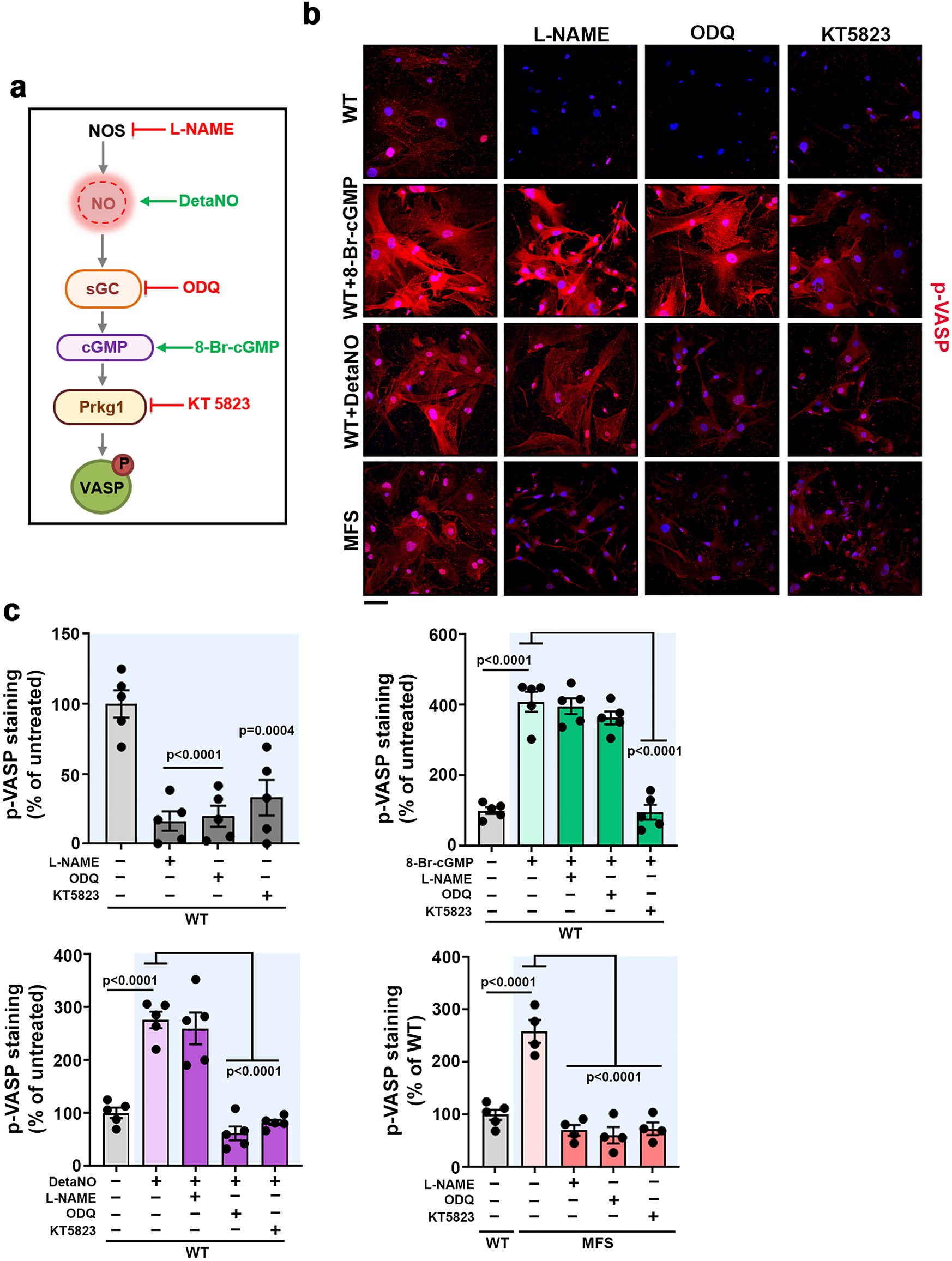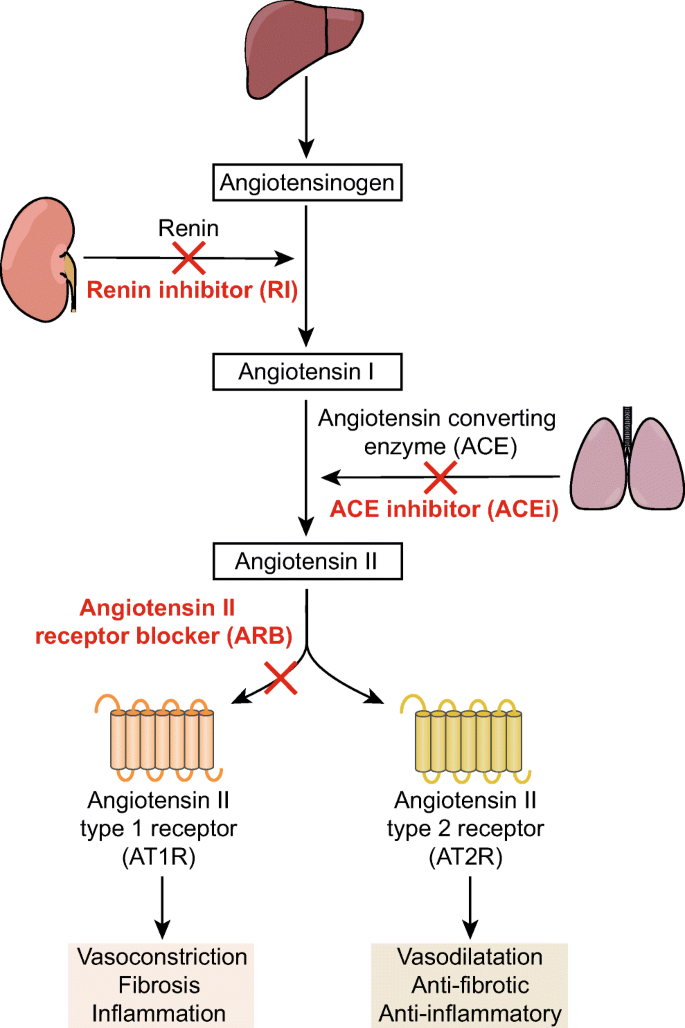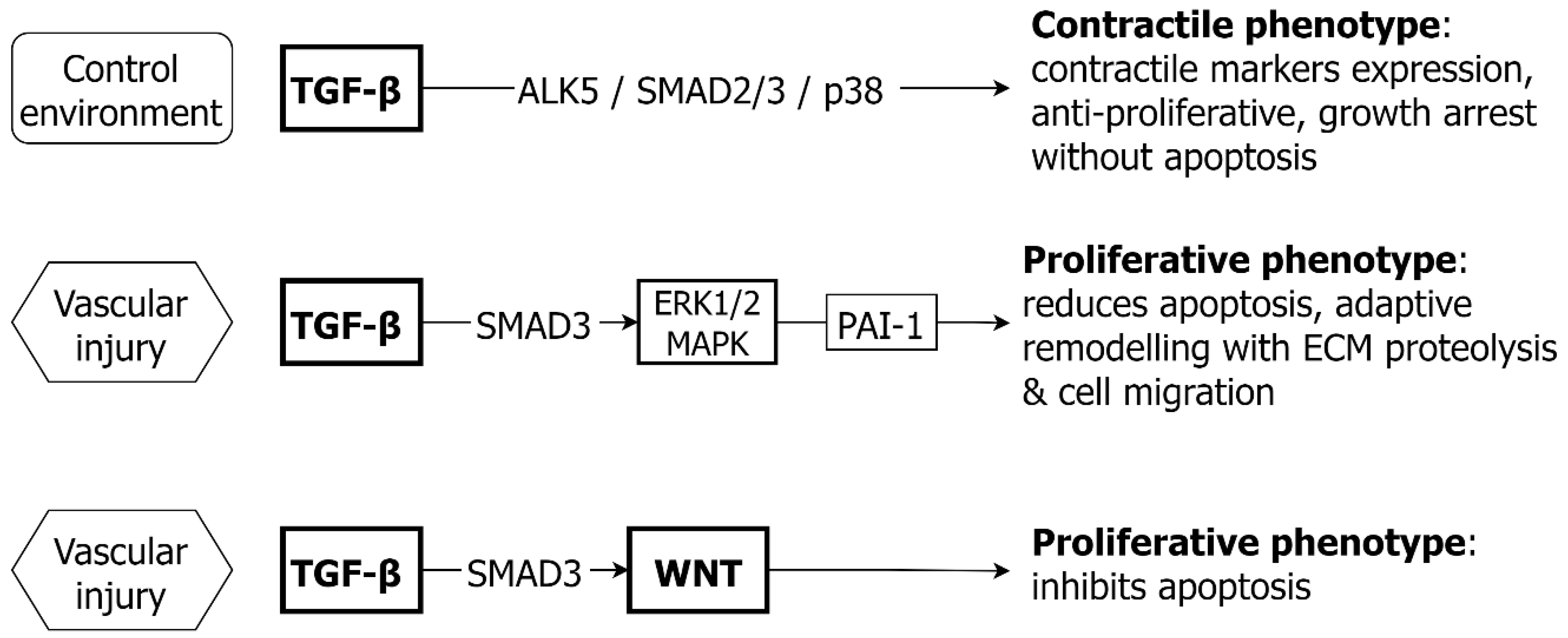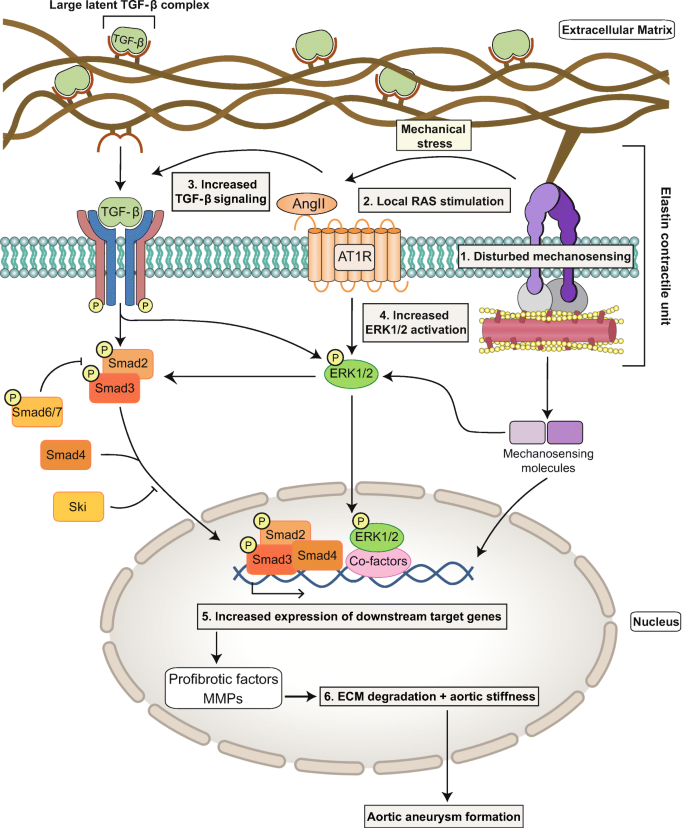Molecular Mechanisms in Genetic Aortopathy–Signaling Pathways and Potential Interventions
Por um escritor misterioso
Descrição
Thoracic aortic disease affects people of all ages and the majority of those aged <60 years have an underlying genetic cause. There is presently no effective medical therapy for thoracic aneurysm and surgery remains the principal intervention. Unlike abdominal aortic aneurysm, for which the inflammatory/atherosclerotic pathogenesis is well established, the mechanism of thoracic aneurysm is less understood. This paper examines the key cell signaling systems responsible for the growth and development of the aorta, homeostasis of endothelial and vascular smooth muscle cells and interactions between pathways. The evidence supporting a role for individual signaling pathways in pathogenesis of thoracic aortic aneurysm is examined and potential novel therapeutic approaches are reviewed. Several key signaling pathways, notably TGF-β, WNT, NOTCH, PI3K/AKT and ANGII contribute to growth, proliferation, cell phenotype and survival for both vascular smooth muscle and endothelial cells. There is crosstalk between pathways, and between vascular smooth muscle and endothelial cells, with both synergistic and antagonistic interactions. A common feature of the activation of each is response to injury or abnormal cell stress. Considerable experimental evidence supports a contribution of each of these pathways to aneurysm formation. Although human information is less, there is sufficient data to implicate each pathway in the pathogenesis of human thoracic aneurysm. As some pathways i.e., WNT and NOTCH, play key roles in tissue growth and organogenesis in early life, it is possible that dysregulation of these pathways results in an abnormal aortic architecture even in infancy, thereby setting the stage for aneurysm development in later life. Given the fine tuning of these signaling systems, functional polymorphisms in key signaling elements may set up a future risk of thoracic aneurysm. Multiple novel therapeutic agents have been developed, targeting cell signaling pathways, predominantly in cancer medicine. Future investigations addressing cell specific targeting, reduced toxicity and also less intense treatment effects may hold promise for effective new medical treatments of thoracic aortic aneurysm.

An overview of the molecular mechanisms underlying development and progression of bicuspid aortic valve disease - Journal of Molecular and Cellular Cardiology

IJMS, Free Full-Text

Recent Advances in Understanding the Molecular Pathophysiology of Angiotensin II Receptors: Lessons From Cell-Selective Receptor Deletion in Mice - Canadian Journal of Cardiology

Aortic disease in Marfan syndrome is caused by overactivation of sGC-PRKG signaling by NO

Mechanisms of Aortic Dilation in Patients With Bicuspid Aortic Valve: JACC State-of-the-Art Review

Transforming Growth Factor-β and the Renin-Angiotensin System in Syndromic Thoracic Aortic Aneurysms: Implications for Treatment

Pathway analysis identifies novel non-synonymous variants contributing to extreme vascular outcomes in Williams-Beuren syndrome

IJMS, Free Full-Text

IJMS, Free Full-Text

Patient-derived microphysiological model identifies the therapeutic potential of metformin for thoracic aortic aneurysm - eBioMedicine

Transforming Growth Factor-β and the Renin-Angiotensin System in Syndromic Thoracic Aortic Aneurysms: Implications for Treatment

An overview of the molecular mechanisms underlying development and progression of bicuspid aortic valve disease - Journal of Molecular and Cellular Cardiology

Pathogenic mechanisms and the potential of drug therapies for aortic aneurysm
Roles of mTOR in thoracic aortopathy understood by complex intracellular signaling interactions

The genetic architecture of non-syndromic thoracic aortic aneurysm
de
por adulto (o preço varia de acordo com o tamanho do grupo)






